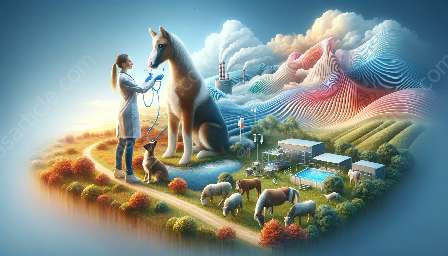Sport sciences encompass a diverse range of disciplines that examine the physiological, biomechanical, psychological, and technological aspects of sports and physical activities. The field of sport sciences is enthralling and incredibly relevant to applied sciences, offering insights and applications that extend to areas such as exercise science, sports medicine, physical therapy, and athletic training. In this topic cluster, we delve into the multifaceted world of sport sciences while highlighting their alignment with applied sciences.
Sport Physiology: Unraveling the Body's Response to Exercise
Sport physiology forms the foundation of understanding how the human body responds and adapts to physical activity and exercise. It explores the intricate mechanisms involved in energy production, cardiovascular function, respiratory responses, and thermoregulation during sports performance. Furthermore, sport physiology investigates the effects of training, nutrition, and environmental factors on athletic performance and overall health.
Biomechanics: Analyzing Movement and Performance
Biomechanics plays a crucial role in sport sciences by examining the mechanical aspects of human movement and athletic performance. Through the application of principles from physics and engineering, biomechanists analyze motion, forces, and torques to optimize techniques, prevent injuries, and enhance sports performance. The insights derived from biomechanical studies also contribute to the design and improvement of sports equipment and gear.
Sports Psychology: Understanding the Mind-Body Connection
Sports psychology delves into the psychological factors that influence sports performance, motivation, and mental well-being of athletes. It explores topics such as goal setting, concentration, visualization, confidence, and the management of anxiety and stress in competitive environments. Sports psychologists also work with athletes to enhance mental toughness, resilience, and overall psychological readiness for optimal performance.
Sports Technology: Innovations Driving Performance
Sports technology encompasses the development and utilization of advanced tools, devices, and equipment to monitor, analyze, and enhance athletic performance. From wearable fitness trackers to motion-capture systems and virtual reality training programs, sports technology continues to revolutionize the way athletes train, compete, and recover. The integration of data analytics and artificial intelligence further augments the potential of sports technology in optimizing performance and reducing injury risks.
Sports Medicine: Promoting Athlete Health and Recovery
Sports medicine intersects with sport sciences to address the prevention, treatment, and rehabilitation of sports-related injuries and medical conditions. The field incorporates elements of anatomy, kinesiology, orthopedics, and rehabilitation to provide comprehensive care to athletes of all levels. Sports medicine professionals apply evidence-based practices to promote injury resilience, facilitate safe return-to-play protocols, and optimize the long-term health of athletes.
Sports Nutrition: Fueling Performance and Recovery
Sports nutrition focuses on the specific dietary needs and nutritional strategies for optimizing sports performance, recovery, and overall well-being. It addresses the role of macronutrients, micronutrients, hydration, and supplementation in supporting the energy demands of training and competition. Sports nutritionists work closely with athletes to customize meal plans, address nutrient deficiencies, and maximize the benefits of nutrition for physical conditioning and recovery.
Physical Therapy and Athletic Training: Rehabilitating and Conditioning Athletes
Within the realm of applied sciences, the disciplines of physical therapy and athletic training closely intertwine with sport sciences. Physical therapists and athletic trainers leverage the principles of sport sciences to facilitate rehabilitation, injury prevention, and conditioning for athletes. Through targeted exercise regimens, manual therapies, and injury management techniques, these professionals contribute to the holistic care and performance optimization of individuals involved in sports and physical activities.
Conclusion: Integrating Sport Sciences into Applied Sciences
As evidenced by the in-depth exploration of sport physiology, biomechanics, sports psychology, sports technology, sports medicine, sports nutrition, physical therapy, and athletic training, the connection between sport sciences and applied sciences is unmistakable. The comprehensive knowledge and practical applications derived from the field of sport sciences have far-reaching impacts on the diverse domains of applied sciences, including exercise science, sports medicine, physical therapy, and athletic training, making it a captivating area of study and innovation.







































